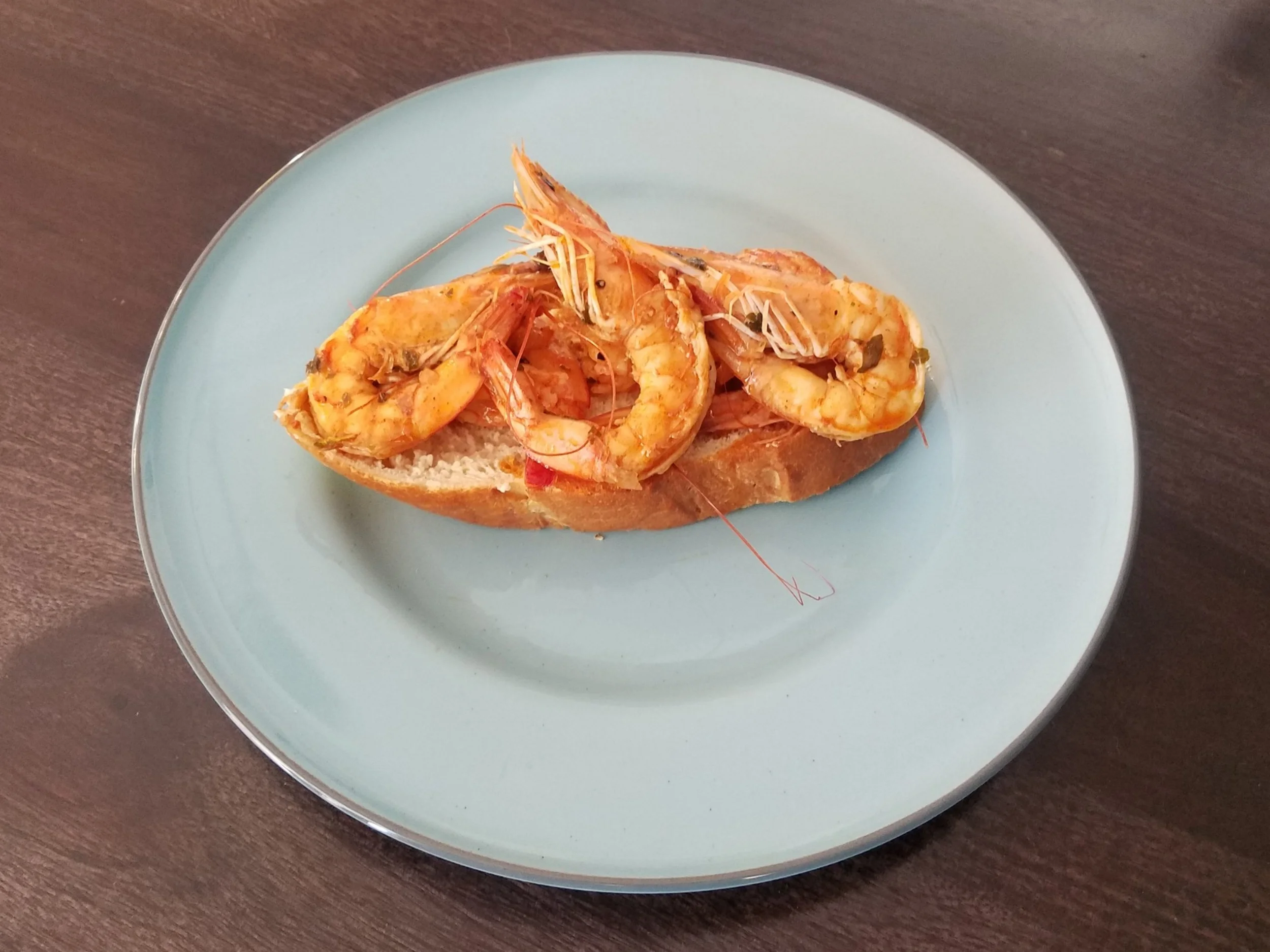PEELING A SHRIMP
Shrimp are among the most common types of seafood consumed in the United States and that means you can buy them pretty much any way you want them. You can buy them in sizes from the little tiny bay shrimps that come in salads, to ultra-jumbos that go about 4 to a pound. You can buy prawns, bay shrimp, pink shrimp, camelback shrimp, brown shrimp, or white shrimp. They can be purchased frozen or fresh, live or dead, with shells or without. There is nothing wrong with a frozen shrimp, especially if they are flash frozen and ice glazed, as long as they are from the USA. I usually buy shrimp based on their appearance. Whatever looks the freshest works for me, regardless of how it is sold. In Louisiana, that means you get them still alive or just after, and they are whole with head and shells on. It also means you’re buying the best shrimp on earth. In California, you have to be a little more discerning. I’m partial to white shrimp from the Western hemisphere. Gulf is best. Shrimp from Ecuador is just as good flavor-wise, but slightly less environmentally responsible. However, Ecuador shrimp is still a better choice than Asian-sourced shrimp both in flavor and sustainability.
Once you have found your perfect shrimp, you need to know what to do with it. I think that there is nothing prettier on a plate or more elegant than an extra-large, whole, head on shrimp with long antennae in a bright sauce.
I encourage you to cook shrimp in the shells wherever possible. It helps retain moisture and keep the texture nice. It is also more forgiving if you overcook it a bit, although the shells become hard to remove if you really overcook it. If you just want to peel the shrimp and cook it without the shell, that will work, but do yourself a favor and make a shrimp stock or a shrimp sauce with the heads and shells. Just simmer them in a bit of white wine, lemon juice, salt, pepper, Worcestershire, cayenne, bay leaves, diced onion, garlic, and a few cups of water for stock. Omit the water and finish with butter and cream for sauce. The proportions are not that important. Play with it a bit. You would throw the heads and shells away otherwise.
To peel a shrimp, grasp the head and tail sections in opposite hands and separate with a tearing motion top to bottom.
Grab the big end of the shrimp with your non-dominant hand and the tail between the thumb and index finger of your dominant hand. Pinch the tail gently and pull down. This move requires a little practice and dexterity. You should be able to get the tail segment off, leaving behind the meat, while also removing the last segment of the shell. If you fail on the first few, it is recoverable and you will get better at it with practice.
Next, remove the other sections of shell like removing a tiny jacket. Grab the edge near the legs and tear around the shrimp.
What remains will be a peeled shrimp. Rinse this and you should be done. Some shrimp may have a heavy sand vein that can be unappetizing. You can remove this. It is rarely necessary. You’ll know when you need to do it.
Now you are ready to cook your shrimp and enjoy. Give yourself plenty of time to do this, especially if you have a bunch. It always takes longer than you expect.







